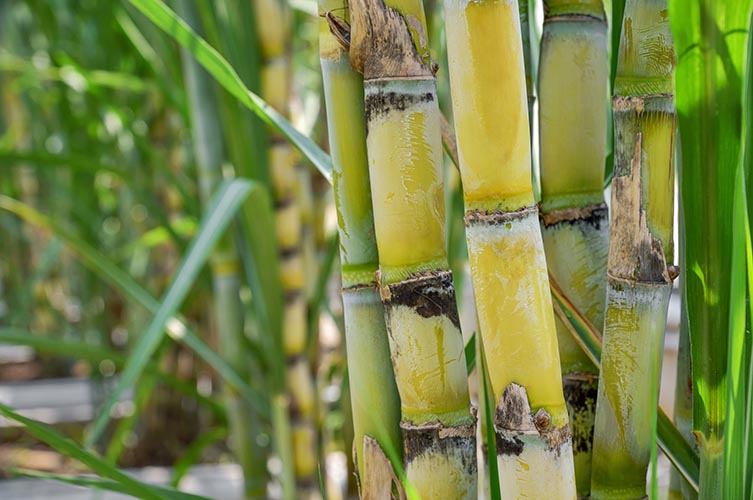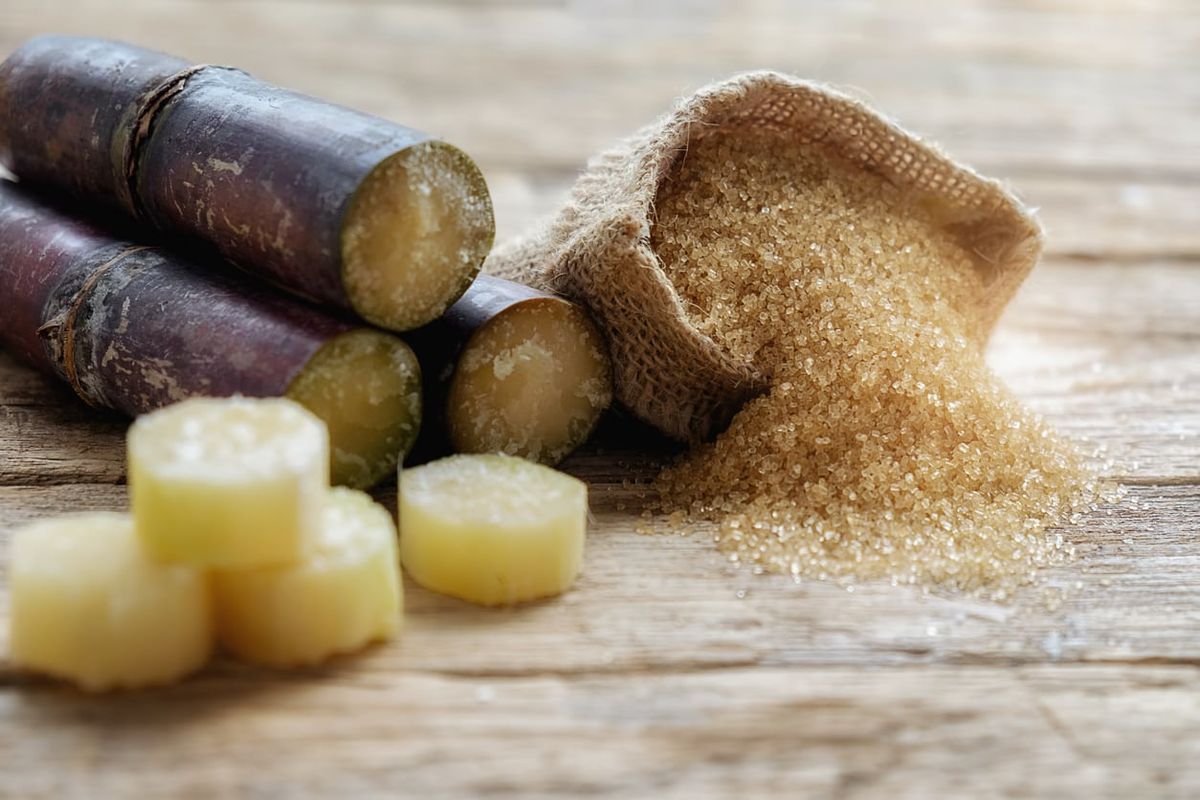All Regarding Sugar Canes: What Are Sugar Canes Used For and Their Duty in Worldwide Farming?
Sugar walking sticks act as a keystone of worldwide farming, mainly identified for their function in sugar manufacturing. They likewise contribute to the creation of by-products like molasses and ethanol. These facets not only sustain various markets but additionally influence economic security in country areas. Nonetheless, the farming of sugar canes deals with considerable ecological challenges. Understanding their diverse role motivates more expedition right into their agricultural methods and sustainability efforts.
The Agricultural Refine of Sugar Cane Cultivation
Although sugar walking cane cultivation may differ by area, the essential farming procedure remains constant. The primary step includes choosing high-yielding selections suitable for local climates. Preparation of the soil is necessary, often calling for husbandry and the enhancement of fertilizers to enhance fertility. Planting generally happens during the rainy season, with farmers making use of either whole stalks or cuttings to develop brand-new crops.As the plants expand, they need diligent treatment, including weed control, bug management, and watering, relying on the environmental conditions. Farmers keep track of the sugar cane's development cycle, which typically covers 10 to 24 months, prior to gathering. Gathering is labor-intensive, typically conducted by hand or with specialized equipment, making certain marginal damage to the stalks. Following harvest, the walking cane is carried to processing centers. This precise cultivation procedure not only supports local economic climates yet likewise plays a substantial duty in worldwide farming practices, adding to food and energy products.
Sugar Production: From Walking Cane to Crystal
The journey of sugar manufacturing begins the minute newly collected sugar walking stick comes to processing centers. The initial step includes chopping the cane and cleaning to prepare it for extraction. Using high-pressure rollers, the juice is drawn out from the crushed walking cane, resulting in a pleasant fluid recognized as sugarcane juice. This juice goes through explanation, where pollutants are gotten rid of with the enhancement of lime and heat.Next, the cleared up juice is focused by steaming it down to produce a thick syrup. This syrup is after that taken shape by cooling, making it possible for sugar crystals to develop. The taken shape sugar is separated from the staying syrup, known as molasses, with centrifugation.Finally, the sugar crystals are cleaned and dried, leading to the acquainted granulated sugar (What Are Sugar Canes Used For). This process transforms raw sugar walking cane into an item that is indispensable to various culinary and industrial applications, highlighting the significance of sugar in international farming
Biofuels and Sugar Canes: A Lasting Future
As the globe significantly seeks sustainable power options, sugar walking sticks have actually arised as an appealing resource for biofuels. The biomass originated from sugar walking sticks can be exchanged ethanol, a renewable fuel choice that substantially reduces greenhouse gas emissions compared to nonrenewable fuel sources. This process not only supplies a cleaner energy source however likewise advertises power freedom for numerous countries.In enhancement, sugar walking cane cultivation supports rural economic climates by developing work in both farming and biofuel manufacturing sectors. Using sugar canes for biofuel manufacturing likewise motivates farming diversification, which can boost soil health and wellness and reduce dependence on solitary crops. In addition, the byproducts of sugar walking cane processing can be used for electrical power generation, additionally adding to a lasting power cycle. As countries venture to satisfy sustainable energy targets, sugar canes are poised to play a necessary function fit a more lasting future in the biofuel landscape.

The Role of Sugar Canes in Beverage Production
Sugar walking canes play a significant duty in drink production, serving as a primary ingredient in rum and adding to the sweet taste of numerous sodas. In addition, their all-natural juices are utilized in various beverages, enhancing taste and allure. This versatility highlights the value of sugar canes in the international beverage market.
Sugar Walking Cane in Rum
Rum production is intricately connected to the growing of sugar walking stick, a crucial plant that gives the required fermentable sugars required for fermentation. This process begins with the removal of juice from collected sugar walking sticks, which is then either fermented straight or processed right into molasses. Yeast is included in transform the sugars into alcohol, resulting in a varied range of rum designs, from light to dark ranges. The geographical area where the sugar walking stick is expanded substantially influences the taste profile of the rum, with variables such as dirt kind and climate playing vital roles. Countries like Barbados, Jamaica, and Cuba are renowned for their rum production, showing the social and historic value of sugar walking stick within the international drink industry.
Soft Drinks Sweetener Resource

Natural Juice Production Utilizes
Along with its significant role in soda manufacturing, sugar walking cane is also critical in the all-natural juice market. The juice removed from sugar walking cane, referred to as walking cane juice, is commemorated for find out here now its all-natural sweetness and unique continue reading this taste profile. This juice is generally taken in fresh in various areas, particularly in tropical nations, where it is appreciated as a revitalizing beverage. Furthermore, cane juice works as a base active ingredient in an array of natural fruit juices and shakes, improving both taste and dietary value. Its natural homes make it an appealing alternative to sweetening agents, attracting health-conscious customers. Overall, sugar walking cane's flexibility in juice manufacturing highlights its relevance in contemporary beverage offerings worldwide.
Advancements in Sugar Cane Byproducts
Advancements in sugar cane by-products are leading the method for lasting solutions in numerous sectors. Biofuels stemmed from sugar walking stick provide an alternative energy resource, while innovations in sustainable product packaging are reducing dependence on typical materials. These advancements highlight the convenience and potential of sugar walking cane beyond its key use in beverage manufacturing.
Biofuels From Sugar Walking Cane
How can the by-products of sugar walking stick add to sustainable power remedies? The conversion of sugar cane into biofuels provides an appealing method for renewable resource. By using the coarse residue, called bagasse, producers can produce bioethanol with fermentation procedures. This bioethanol can offer as a lasting choice to nonrenewable fuel sources, minimizing greenhouse gas exhausts and dependence on non-renewable sources. In addition, molasses, an additional result, can be fermented to generate biofuels, maximizing resource effectiveness. The power produced from sugar walking cane not only provides a cleaner fuel resource however also improves the total economic stability of sugar manufacturing. By incorporating biofuel manufacturing right into their procedures, sugar walking stick industries can play an essential duty in progressing sustainable energy solutions worldwide.
Sustainable Product Packaging Solutions
Lasting product packaging services are increasingly being established from sugar cane results, showcasing the flexibility of this farming staple. Developments such as biodegradable plastics originated from bagasse, the coarse deposit left after juice removal, are getting traction. These materials use an environmentally friendly choice to conventional plastics, reducing dependence on fossil gas and reducing carbon impacts. In addition, sugar cane-based product packaging is compostable, breaking down normally without damaging the atmosphere. Companies are currently exploring these alternatives to straighten with consumer need for sustainability. As understanding of plastic pollution expands, the adoption of sugar cane-derived packaging is expected to rise, placing sugar walking sticks as a principal in the shift to greener packaging remedies in various sectors.
Economic Impact of Sugar Walking Stick Farming

Sugar cane farming has deep roots in lots of economies, its economic effect prolongs much past farming production. This crop acts as a substantial income for countless farmers worldwide, specifically in creating countries where farming is a primary income. Sugar walking cane adds to neighborhood economies through job development in harvesting, handling, and farming. The sector additionally Get the facts boosts development in relevant sectors such as transportation, equipment manufacturing, and food processing.Furthermore, sugar cane is a principal in worldwide profession, influencing worldwide markets and prices. Countries that produce sugar cane commonly depend on exports to boost their financial security. The spin-offs of sugar walking stick, such as ethanol and molasses, diversify income streams for farmers and add worth to the agricultural market. Generally, the economic ramifications of sugar cane farming are profound, affecting not only farmers however additionally whole communities and national economic situations.
Ecological Factors To Consider in Sugar Walking Stick Cultivation
While sugar walking cane farming plays a necessary role in several economic climates, it additionally increases substantial environmental concerns that can not be overlooked. The substantial use fertilizers and chemicals in sugar cane growing typically brings about soil deterioration and water pollution. Runoff from these chemicals can contaminate close-by water bodies, damaging aquatic ecological communities. Additionally, the monoculture methods widespread in sugar cane farming minimize biodiversity, making environments more susceptible to parasites and diseases.Deforestation is another crucial issue, as land is usually cleared to make way for sugar plantations, bring about habitat loss for wild animals and enhanced carbon exhausts. Moreover, the high water usage needed for sugar walking stick irrigation can stress neighborhood water sources, particularly in dry regions. As worldwide demand for sugar proceeds to increase, attending to these environmental challenges ends up being essential to ensure lasting techniques in sugar walking cane farming.
Regularly Asked Inquiries
What Are the Nutritional Conveniences of Sugar Walking Cane?
The dietary advantages of sugar walking stick mainly include its high carb web content, giving power. In addition, it consists of vitamins, minerals, and anti-oxidants that might sustain general health, though moderation is essential due to its sugar material.
Exactly How Does Sugar Cane Affect Citizen Ecosystems?
Sugar walking cane growing can greatly impact neighborhood environments by changing land usage, influencing biodiversity, and requiring substantial water sources. Furthermore, it might result in dirt deterioration and chemical drainage, interfering with bordering habitats and wild animals populations.
What Is the History of Sugar Cane Cultivation?

Are There Alternatives to Sugar Walking Cane for Sugar Production?
Alternatives to sugar walking cane for sugar production consist of sugar beets, corn, and numerous tropical plants like sorghum and agave (What Are Sugar Canes Used For). These plants provide varied sources of sweet taste, each with unique cultivation demands and environmental influences
Exactly How Do Weather Condition Patterns Impact Sugar Cane Returns?
Climate patterns considerably affect sugar walking stick returns via temperature variations, rainfall amounts, and seasonal cycles. Dry spell or too much rainfall can prevent growth, while suitable conditions enhance photosynthesis, inevitably influencing the quantity and high quality of the harvest. The trip of sugar production begins the moment fresh harvested sugar walking stick shows up at refining facilities. The crystallized sugar is separated from the continuing to be syrup, known as molasses, with centrifugation.Finally, the sugar crystals are washed and dried out, resulting in the acquainted granulated sugar. Rum manufacturing is intricately linked to the growing of sugar walking stick, a necessary crop that supplies the essential fermentable sugars required for fermentation. In addition, the monoculture methods prevalent in sugar cane farming reduce biodiversity, making ecosystems much more prone to parasites and diseases.Deforestation is an additional critical concern, as land is frequently cleared to make way for sugar vineyards, leading to habitat loss for wildlife and enhanced carbon discharges. Alternatives to sugar walking stick for sugar production consist of sugar beetroots, corn, and different tropical plants like sorghum and agave.